Cultivar group AAA Group Rank Cultivar | ||
 | ||
Similar Cavendish banana, Pisang Awak, Lady Finger banana, Musa acuminata, Fusarium oxysporum fsp cube | ||
Gros michel banana review weird fruit explorer ep 150
Gros Michel, often known as Big Mike, and literally "Fat Michael" in French, is an export cultivar of banana and was, until the 1950s, the main variety exported to the United States.
Contents
- Gros michel banana review weird fruit explorer ep 150
- Tasting the rare gros michel banana
- Taxonomy
- Early popularity and decline
- Continued use
- Flavour
- References

Tasting the rare gros michel banana
Taxonomy
Gros Michel is a triploid cultivar of the wild banana Musa acuminata, belonging to the AAA group.
Its official designation is Musa acuminata (AAA Group) 'Gros Michel'.
Synonyms include:
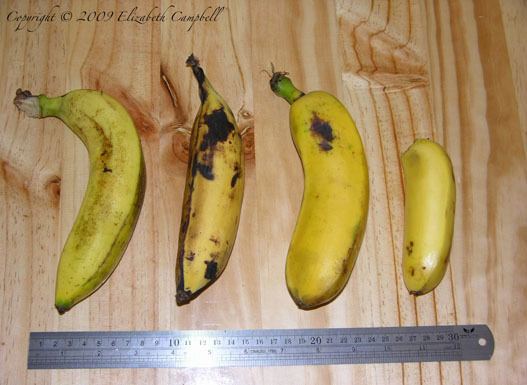
Gros Michel is known as Guineo Gigante, Banano, and Plátano Roatán in Spanish. It is also known as Pisang Ambon in Malaysia and Indonesia, Thihmwe in Burma, Chek Ambuong in Cambodia and Kluai hom thong in Thailand.
Early popularity and decline
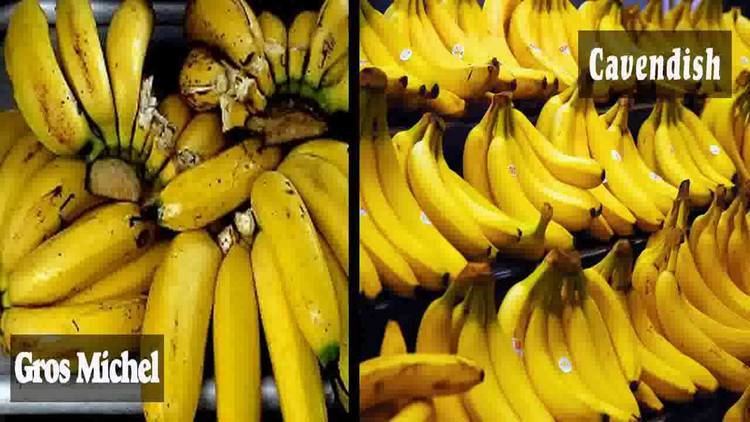
French naturalist Nicolas Baudin carried a few corms of this banana from Southeast Asia, depositing them at a botanical garden on the Caribbean island of Martinique. In 1835, French botanist Jean François Pouyat carried Baudin's fruit from Martinique to Jamaica.
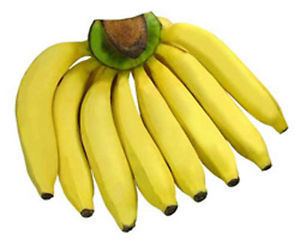
This variety was once the dominant export banana to Europe and North America, grown in Central America, but in the 1950s, Panama disease, a wilt caused by the fungus Fusarium oxysporum f.sp. cubense, wiped out vast tracts of 'Gros Michel' plantations in Central America, though it is still grown on non-infected land throughout the region.
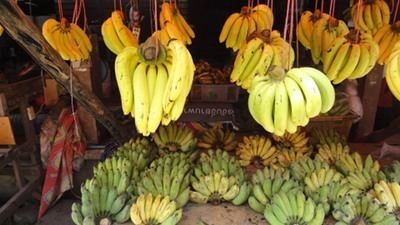
By the 1960s, the exporters of Gros Michel bananas were unable to keep trading such a susceptible cultivar, and started growing resistant cultivars belonging to the Cavendish subgroup (another Musa acuminata AAA).
Continued use
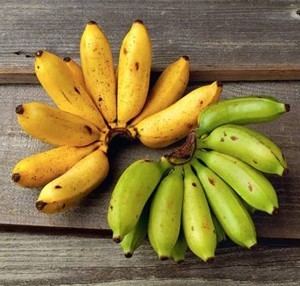
The original 'Gros Michel' variety is a top export for producing countries in Malaysia and Thailand, with the grade A bananas being exported to Japan, and increasingly to China.
The Honduras Foundation for Agricultural Research set out to breed Panama Disease resistant 'Gros Michel' bananas, and after initial problems due to poor agronomic characteristics of the plants from which the pollen was taken (male parent), they developed an improved diploid (SH-3142) which served as the male parent for the development of various hybrids (FHIA-01, FHIA-18, FHIA-21 and FHIA-250). The hybrids released so far have good bunch and agronomic characteristics, are resistant or tolerant to Fusarium wilt and are being grown in a wide range of agro-ecological conditions in Africa, Latin America and Australia.
Flavour
There is an urban legend that artificial banana flavour tastes "fake" because it was intended to mimic the flavour of the 'Gros Michel' and not the Cavendish banana. This is due to the main chemical in banana flavoring to be isoamyl acetate, the same chemical found in all bananas. Isoamyl acetate is popular due to it being a versatile and easy to work with compound. It is perceived to be closer in taste to a Gros Michel banana due to that strain having a higher concentration of that chemical and fewer "volatile components" that are found in other bananas. The Cavendish banana has a lot more complexity in its makeup, and therefore tastes less like pure isoamyl acetate. Whether or not banana flavorings were purposefully designed to taste more like Gros Michel is unknown.
